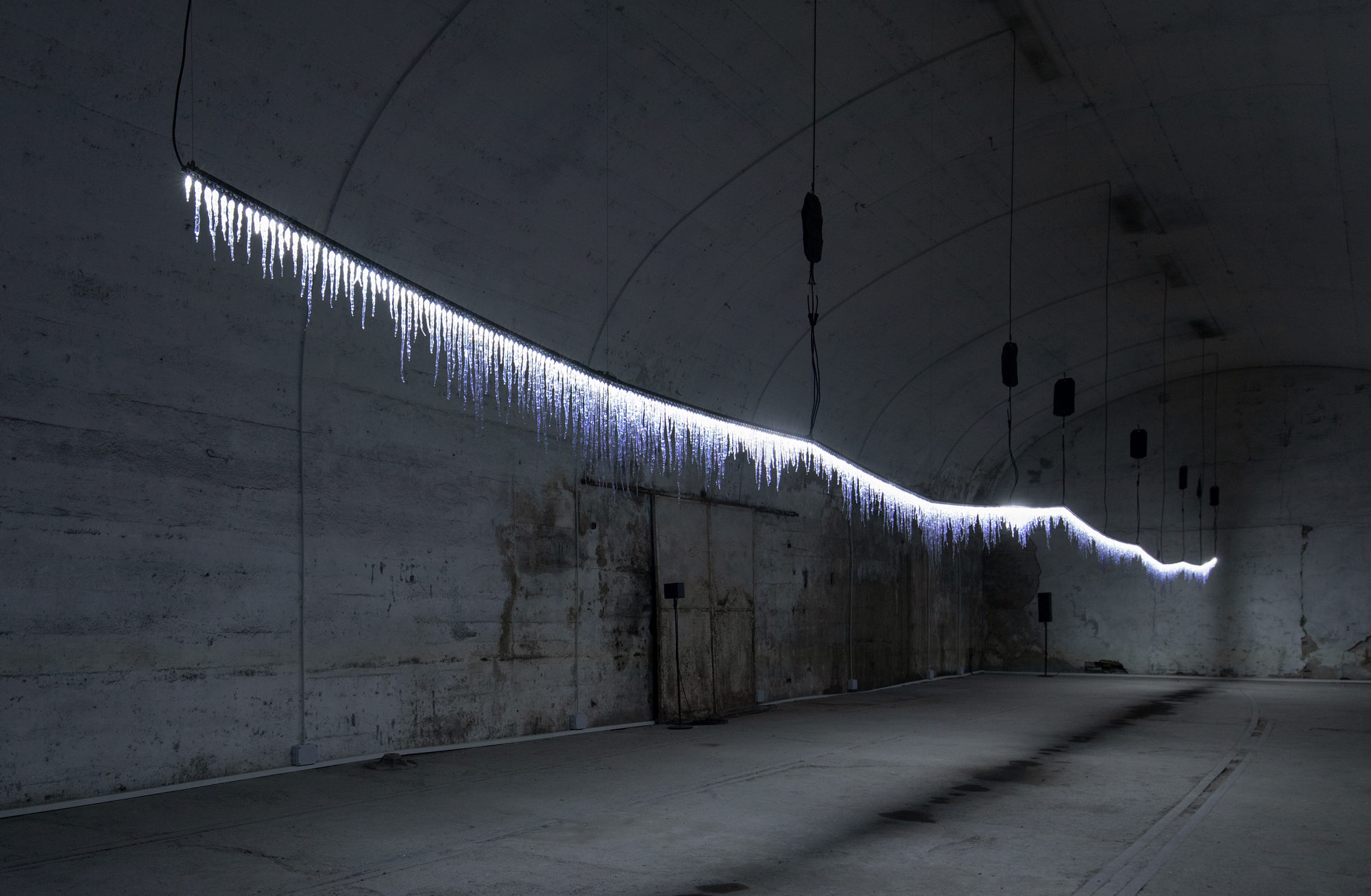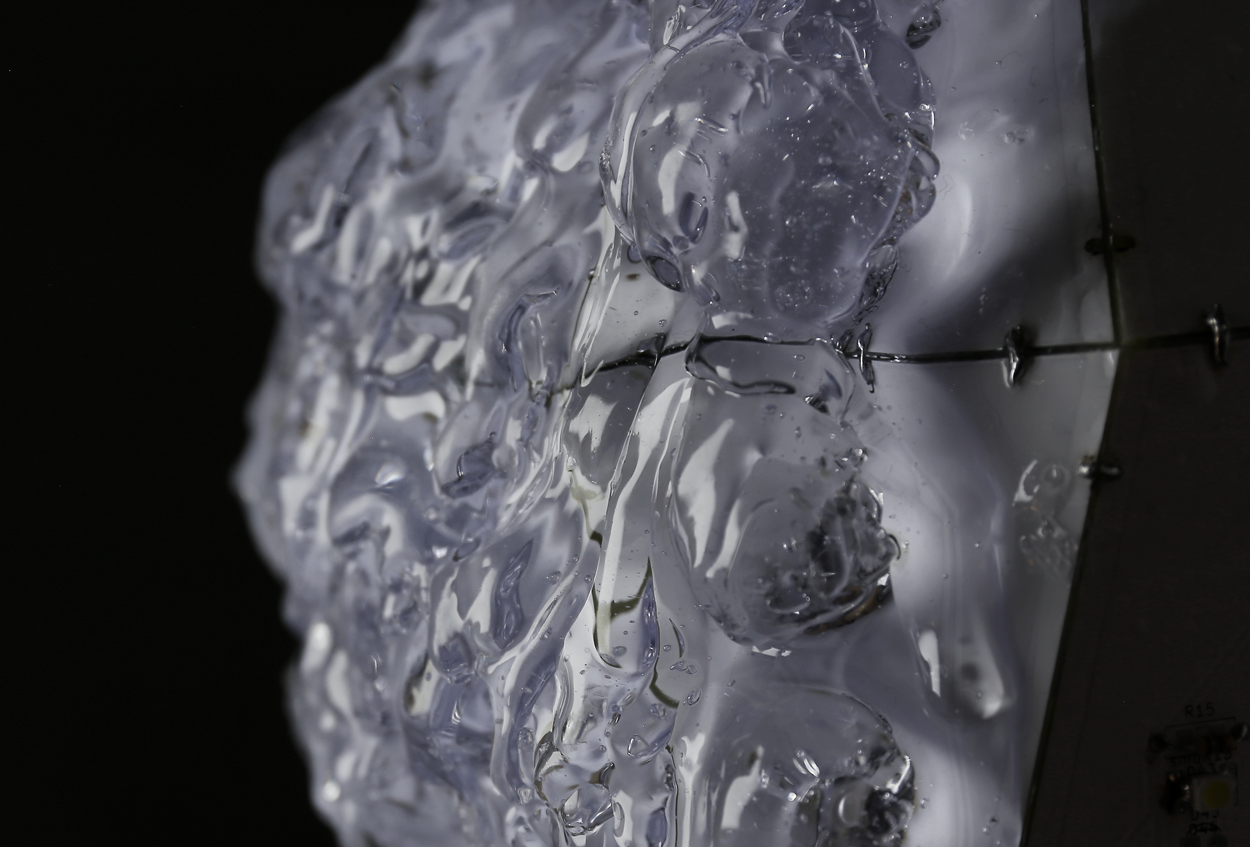This month, crowds will flock to Design Miami/ to glimpse the latest in cutting-edge collectible design, but one presentation promises to be especially eye-catching. Takt Project’s “Glow Grow: Pottery” is proof positive that light can achieve far more than simple illumination. In fact, as principal designer Satoshi Yoshiizumi explains, what the Japanese design studio has in store is not so much a lighting fixture as a glimmering example of biomimicry.
The functional light sculptures, which resemble icy vases, have a bubbling, organic-looking surface, achieved by dripping resin onto a PVC base structure. The objects simultaneously “glow” and “grow” as the liquid resin solidifies and expands in overall size. As the resin’s shape evolves, interior light emanating from programmed LEDs fluctuates in quality and brightness. “Although half of the process is manually controlled, the final result is a collaboration with nature creating form by phenomena,” Yoshiizumi says. “It’s in between human and nature.”
This latest innovation distills and refines the Tokyo-based firm’s masterful command of technology, engineering, and product design into a simple lighting system that belies its complex technical attributes—no surprise considering the studio was founded by a group of Nendo alumni. Past projects run the gamut from advancements in wearable tech (Sony’s FES watch), personal mobility vehicles (a wheelchair for Whill), and 3-D-printed layered glass (a collection of vases for Swarovski), some of which have landed in esteemed institutions like the Musée des Arts Décoratifs in Paris, the forthcoming M+ museum in Hong Kong, and Tokyo’s renowned AXIS Gallery.
Research accounts for roughly half of Takt’s practice, and lately, Yoshiizumi has been considering humanity’s toll on the environment. The firm has shifted gears toward studying the Anthropocene, our current geological epoch delineated by the beginning of significant human impact on Earth’s ecosystems. “We are standing at the boundary of the old era and the new,” he says. “We are living among design totally controlled by man—our current point of view lacks coexistence with nature.” In “Glow Grow: Pottery,” Takt spells out a more symbiotic future.


